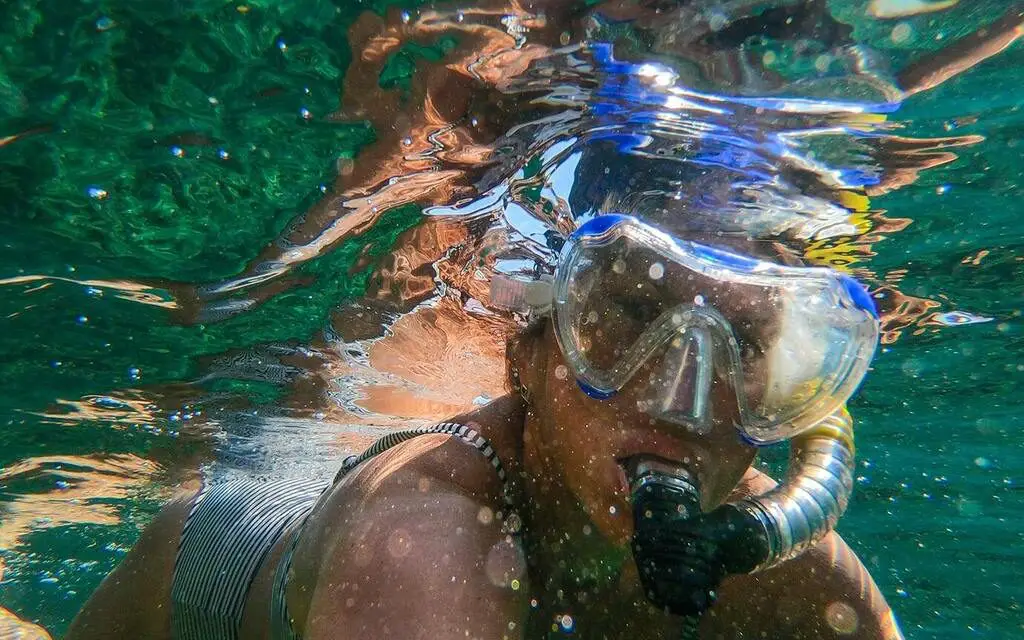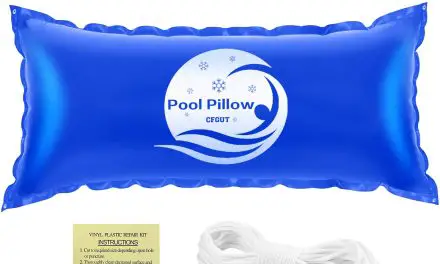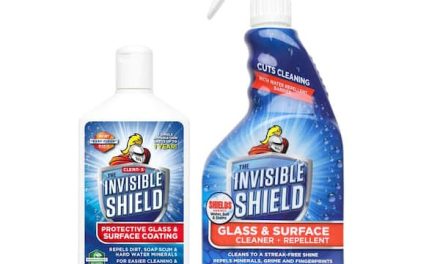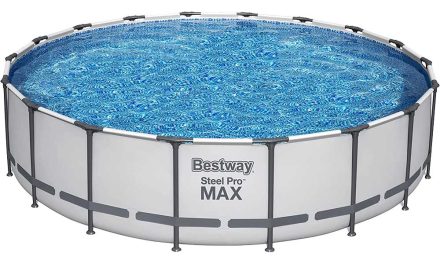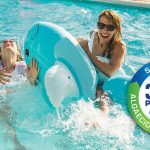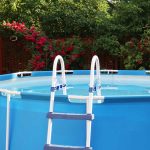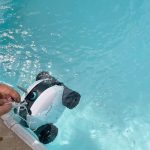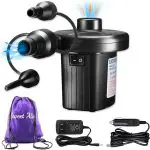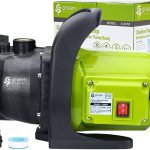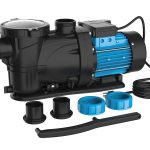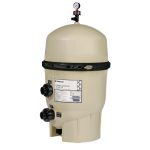Snorkels work underwater by allowing individuals to breathe air from above the water’s surface through a tube attached to a mouthpiece. Diving into the underwater world is an exhilarating experience, and snorkeling is a popular way to explore the colorful and vibrant marine life beneath the surface.
But have you ever wondered how snorkels actually work? We will delve into the mechanics of snorkels, understanding how they enable us to breathe comfortably while submerged. We will explore the basic principles behind their functionality, the different types available, and some useful tips for a successful snorkeling adventure.
So, let’s dive in and uncover the secrets behind these essential pieces of equipment!
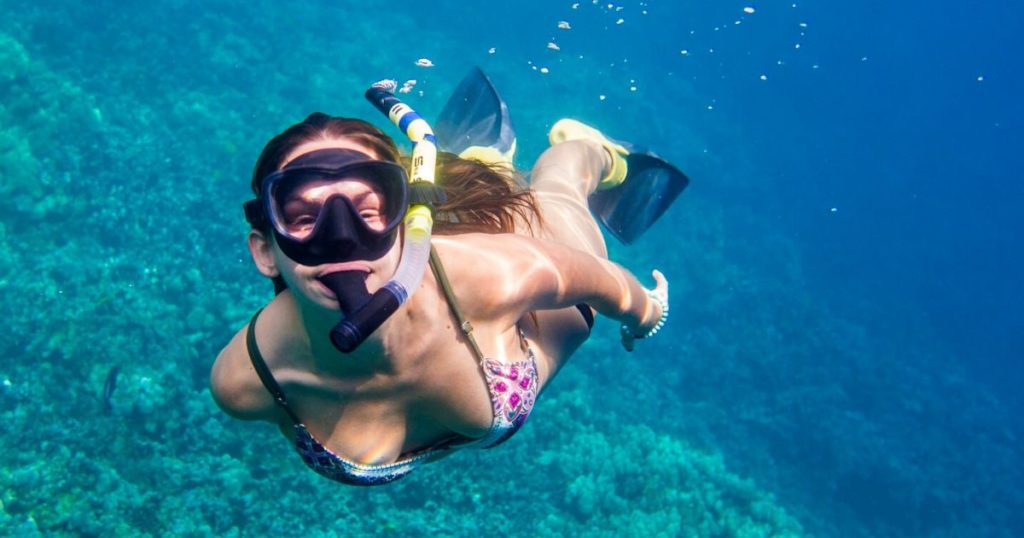
Credit: www.seaparadise.com
The Basic Structure Of A Snorkel
The basic structure of a snorkel consists of a breathing tube and a mouthpiece. The breathing tube is long and upright, allowing the snorkeler to reach the surface of the water without having to lift their head. It is typically made from flexible materials such as silicone or PVC.
The mouthpiece is attached to one end of the breathing tube and is designed to fit comfortably in the snorkeler’s mouth. It is often made from soft, durable materials for maximum comfort. The components of a snorkel also include a purge valve, which allows for easy clearing of any water that may enter the breathing tube.
When it comes to materials used in snorkels, manufacturers often choose lightweight and corrosion-resistant materials like plastic or stainless steel. These materials ensure that the snorkels are durable and can withstand the underwater environment. Overall, the purpose of a snorkel is to provide an easy breathing solution for underwater exploration and enjoyment.
The Snorkel Tube
The snorkel tube is an essential component of snorkeling gear. Its design allows divers to breathe underwater by extending above the water’s surface. The length and diameter of the tube play a crucial role in ensuring a comfortable and effective experience.
A longer tube allows the diver to submerge deeper, while a wider diameter facilitates easier breathing. Additionally, some snorkels include a purge valve, which helps in clearing any water that enters the tube. This valve is positioned at the bottom, allowing the diver to exhale forcefully and eliminate any unwanted water.
Overall, the design of the snorkel tube is essential for providing divers with a safe and enjoyable underwater experience.
The Mouthpiece
Snorkels work underwater by utilizing a mouthpiece that allows the diver to breathe. The mouthpiece is designed to fit comfortably in the mouth, ensuring a secure seal. It serves a key function in enabling continuous airflow while submerged. There are various types of mouthpieces available, including those made from silicone or rubber, each with its own advantages.
Comfort and fit are crucial when choosing a mouthpiece as it affects the overall diving experience. A well-fitting mouthpiece ensures that the snorkeler can breathe effortlessly and enjoy the underwater scenery without any discomfort. Snorkeling becomes more enjoyable when the equipment fits properly, enhancing the adventure and allowing for a relaxed exploration of the marine world.
So, when selecting a snorkel, make sure to consider the type, fit, and comfort of the mouthpiece for a wonderful underwater experience.
The Snorkel’S Top End
Snorkels work underwater by allowing the user to breathe while their face is submerged. The top end of the snorkel plays a crucial role in this process. There are different types of snorkel tops available, each with its own benefits and drawbacks.
These tops are designed to facilitate easy breathing and prevent water entry. Dry-top systems are particularly effective in ensuring that water does not enter the snorkel. They are designed to close automatically when the snorkel is submerged, preventing water from entering.
This feature is especially useful for snorkelers who may accidentally dive below the surface. By understanding the different types of snorkeltops and the role of dry-top systems, snorkelers can choose the most suitable equipment for their underwater adventures. So, whether you are exploring coral reefs or observing marine life, a well-designed snorkel top is essential for a comfortable and enjoyable experience.
Breathing Techniques And Snorkel Use
Breathing underwater with a snorkel requires proper technique to ensure a smooth experience. When using a snorkel, it’s important to remember to breathe slowly and deeply. This allows for efficient oxygen intake and helps to prevent fatigue while exploring underwater.
Another essential aspect is clearing water from the snorkel tube. If water enters the tube, a quick exhale forcefully removes it, ensuring continuous airflow. Safety is paramount, so it’s crucial to follow some tips while using a snorkel. Always snorkel with a buddy or in a group, as having someone watching your back is important for any potential emergencies.
Additionally, it’s wise to avoid excessive depths and strong currents, as they can pose risks to even experienced snorkelers. By following these guidelines, snorkeling can provide an unforgettable underwater adventure.
Equalizing Pressure
Understanding pressure changes underwater is crucial for snorkelers. When diving beneath the surface, the pressure increases significantly. To equalize the pressure in your ears and sinuses, you can employ several techniques. One commonly used method is called the Valsalva maneuver, which involves pinching your nose and gently blowing.
This helps to balance the pressure between your ears and the surrounding water. It’s essential to equalize regularly to avoid discomfort and potential injury. Failure to equalize properly can lead to painful conditions like barotrauma. By equalizing pressure, you can ensure an enjoyable snorkeling experience without any ear or sinus issues.
Practice and mastering equalization techniques are vital for any aspiring snorkeler.
Choosing The Right Snorkel
Snorkels work underwater by allowing you to breathe while your face is submerged. Choosing the right snorkel involves considering several factors. These include the type of snorkeling activity you will be participating in. Different types of snorkels are available, such as traditional, semi-dry, and dry snorkels, each with their own benefits.
Additionally, it is important to customize your snorkel for a comfortable fit. This can be done by adjusting the mouthpiece, strap, and purge valve to ensure a secure and snug fit. By selecting the appropriate snorkel and personalizing it to your needs, you can have a more enjoyable and safe underwater experience.
So, take your time to consider these factors when selecting a snorkel. Happy exploring!
Snorkel Maintenance And Care
Snorkels enable us to breathe comfortably underwater by extending above the surface. To maintain and care for your snorkel, proper cleaning and sanitizing are vital. Gently rinse the snorkel with fresh water after each use to remove saltwater and debris.
Store it in a dry, well-ventilated area away from direct sunlight. Avoid bending or crushing the snorkel, as it can damage crucial components. Regularly inspect the snorkel for wear and tear, replacing worn-out parts to ensure optimal functionality. By following these maintenance tips, you can prolong the lifespan of your snorkel and enhance your underwater adventures.
Advancements In Snorkel Technology
Advancements in snorkel technology have led to innovations in snorkel design. One notable advancement is the introduction of integrated snorkel masks. These masks combine the snorkel and mask into a single unit, allowing for a more streamlined and comfortable underwater experience.
Another development is the use of breathable fabrics and advanced materials in snorkels. These materials enable better airflow while keeping water out, ensuring that snorkelers can breathe easily and eliminate the need for constant clearing of water from the tube.
With these advancements, snorkelers can now enjoy longer and more uninterrupted underwater explorations. The evolution of snorkels continues to enhance the overall snorkeling experience by improving comfort, ease of breathing, and efficiency in water clearance.
Full Face Snorkel Masks
Full-face snorkel masks are specially designed to offer a more immersive underwater experience. These masks cover the entire face, allowing users to breathe naturally through their nose and mouth. With a separate chamber for breathing and a built-in snorkel, these masks ensure a steady flow of fresh air and eliminate the need for a separate mouthpiece.
Some key features and benefits of full-face masks include a wider field of view, fog-resistant design, and dry snorkel technology that prevents water from entering the mask. Additionally, full-face masks are suitable for both beginners and experienced snorkelers, as they provide enhanced comfort and allow for easy communication underwater.
However, it is important to consider certain safety precautions when using full-face masks. Users should ensure a proper fit to prevent leakage and practice proper breathing techniques. It is also crucial to be aware of potential CO2 buildup and follow the manufacturer’s guidelines for usage.
In comparison to traditional snorkel setups, full face masks offer a more convenient and enjoyable snorkeling experience. They eliminate the discomfort of biting down on a mouthpiece and provide a clear, unobstructed view underwater. However, it is essential to assess personal preferences and needs before making a decision.
Breathing Assistance Devices
Breathing assistance devices are essential for snorkeling, providing improved breathing efficiency underwater. They enhance the overall snorkeling experience by making it easier to breathe while exploring the underwater world. These devices come in various types and designs, ensuring there is a suitable option for every snorkeler.
Some popular devices include dry snorkels, full-face masks, and traditional snorkel tubes with a purge valve. A dry snorkel prevents water from entering, keeping the breathing chamber dry, while a full-face mask covers the entire face and allows natural breathing through the nose and mouth.
Traditional snorkel tubes with purge valves are reliable options for those who prefer a more conventional approach. It is crucial to select the right device based on individual needs, preferences, and comfort level to ensure a safe and enjoyable snorkeling experience.
Keep these guidelines in mind to make the best choice and dive into the underwater world with ease.
Emerging Technologies In Snorkel Gear
Emerging technologies in snorkel gear have revolutionized the way we explore underwater. Smart snorkels, equipped with advanced features, enhance the snorkeling experience. These snorkels are designed with innovative materials and ergonomic designs to ensure comfort and ease of use. The latest developments in snorkel gear technology include dry-top snorkels, which prevent water from entering the snorkel tube when submerged.
Additionally, some smart snorkels have built-in cameras, allowing users to capture breathtaking underwater moments. Looking ahead, future trends in the snorkeling industry point towards more lightweight and streamlined snorkel gear, focusing on improved breathing and reduced drag in the water.
With these advancements, snorkelers can dive deeper and explore the mesmerizing underwater world with greater convenience and confidence. The future of snorkeling looks promising, with cutting-edge innovations continuously shaping the industry.
Frequently Asked Questions For How Do Snorkels Work Underwater
How Do Snorkels Work Underwater?
Snorkels work by allowing you to breathe air while your face is submerged underwater.
Can You Talk Underwater With A Snorkel?
No, it’s not possible to talk underwater with a snorkel as your mouth is covered and airflow is restricted.
How Can You Prevent Water From Entering A Snorkel?
To prevent water from entering the snorkel, make sure the top valve is above the water level and practice proper breathing techniques.
Conclusion
Snorkels are an essential tool for underwater exploration, allowing us to enjoy the beauty beneath the surface. Understanding how they work is crucial for a successful and comfortable snorkeling experience. By creating an airway to the surface, snorkels enable swimmers to breathe without lifting their heads out of the water.
The tube design prevents water from entering through a valve located at the top of the snorkel. It is important to choose a well-fitted snorkel and clear any blockages before diving in. By maintaining proper breathing techniques and avoiding rapid ascents, snorkeling can be a safe and enjoyable activity.
Remember to take breaks and relax when needed, so you can fully embrace the underwater world and all its wonders. So strap on your gear, dive into the depths, and let your snorkel guide you on an unforgettable aquatic adventure.

